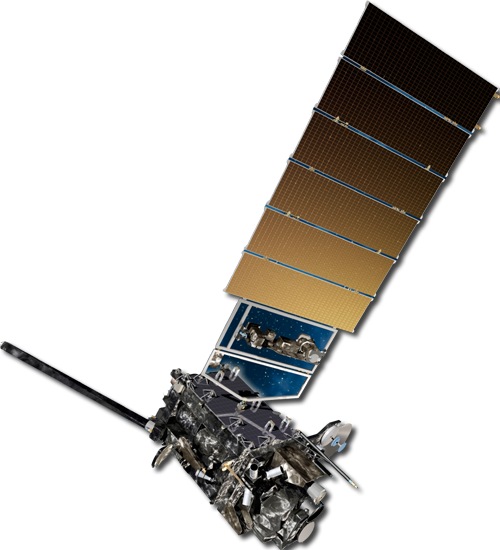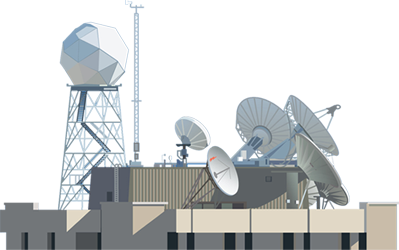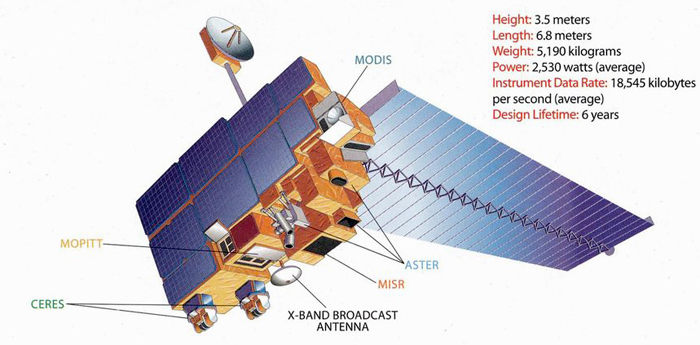Monitoring the Global Environment

The POES Earth Observing Satellite (EOS) Program - I
TERRA

The launch of the Terra satellite marked the beginning of a comprehensive program to monitor solar radiation, the atmosphere, the oceans and continents from a single space-based platform. Terra provides measurements of the global/seasonal distribution of global bio-productivity (land and oceans); land use; land cover, snow and ice; 24-hour global surface temperature; clouds (macrophysics, microphysics, and radiative effects); radiative energy fluxes; aerosol properties and water vapor, fire occurrence, and trace gas levels.
Instruments
There are five instruments on the Terra satellite working together:
- ASTER - Advanced Spaceborne Thermal Emission and Reflection Radiometer
- CERES - Clouds and the Earth's Radiant Energy System
- MISR - Multi-angle Imaging Spectro-Radiometer
- MODIS - Moderate-resolution Imaging Spectroradiometer
- MOPITT - Measurements Of Pollution In the Troposphere
"Terra" is the Latin word for land. The EOS AM-1 satellite was given this name because the timing of the orbit flies the satellite over the Earth’s largest land masses (the northern hemisphere) in the morning when cloud cover is at a minimum.
| 8/ 15 |






